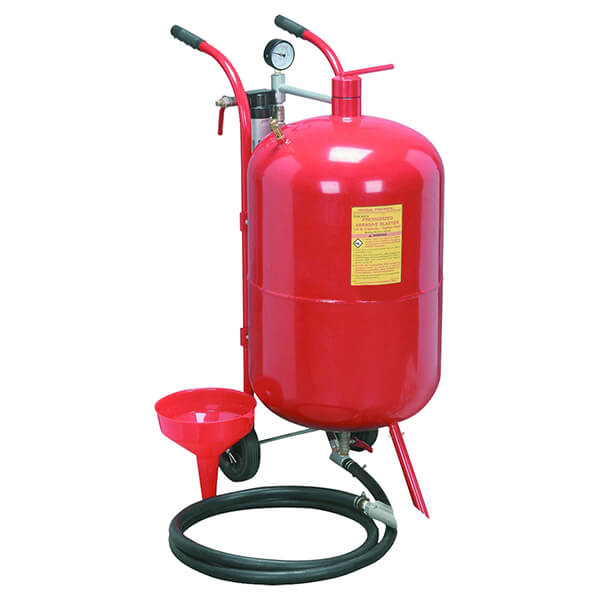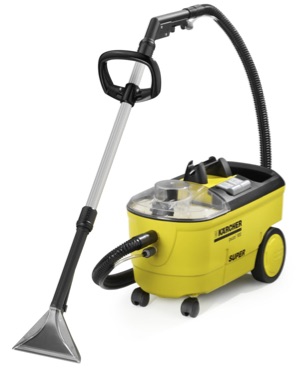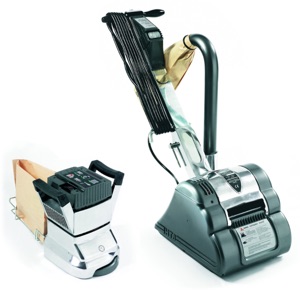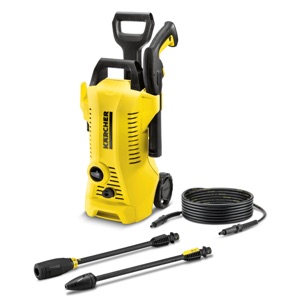Sandblaster hire

A sandblaster is used for sandblasting (abrasive blasting/ grid blasting), applying an abrasive material on a surface at high speed and pressure. Main applications are cleaning (e.g. removing graffiti, paint or corrosion from bricks, concrete, metal or timber), cleaning house facades and making surface structures.
The price for hiring a sandblaster depends on its reservoir size, pressure and whether a compressor is included or not.
Sandblaster hire guide
What is a sandblaster?
A sandblaster is used for sandblasting - also called abrasive blasting or grid blasting - a process in which an abrasive material (e.g. sand) is applied to a surface at high speed and pressure. The effect is similar to using sandpaper, and can be used to smoothen or roughen a surface, shape a surface or remove surface contaminants. Key applications are cleaning (e.g. removing graffiti, paint or corrosion from bricks, concrete, metal or timber) and making surface structures (e.g. on glass or on a tombstone).
Different abrasive materials can be used, with options including (from most abrasive to least abrasive) metal shot, sand, glass beads, plastics, walnut shells, coconut shells, baking soda, ice and dry ice. Sandblasting can be done either dry (using compressed air) or wet (using a pressurized stream of a liquid/ vapour). Wet blasting reduces the amount of dust resulting from the sandblasting and protects the surface being cleaned.
How to choose which sandblaster to hire?
First of all, determine which technique (e.g. wet vs dry) and medium you need for your project, which will depend on the surface type and desired treatment. Depending on your choice of technique and medium, ensure the sandblaster you are going to hire is compatible.Furthermore, consider the following when hiring a grit blaster:
- Reservoir size
- Pressure
- Amount of compressed air needed
When hiring a sandblaster, take into account that safety equipment, a compressor and abrasive media are (often) not included in the quoted price.
Which media are used for sandblasting?
There are many different media being used for sandblasting, including (from most abrasive to least abrasive) metal shot, sand, glass beads, plastics, walnut shells, coconut shells, baking soda, ice and dry ice. Traditionally silica sand was used for abrasive blasting, however this has severe health concerns and is not allowed anymore.
Selection of media is crucial as they each have different characteristics (e.g. hardness, shape, and density) resulting in different outcomes of sandblasting.
Well-known sandblaster brands
Image source: toolplanet


